On View
Painter Natalie Frank on What New York City’s Dominatrix Community Taught Her About Art
The artist talks to us about reclaiming fairy tales and the subtleties of the female gaze.
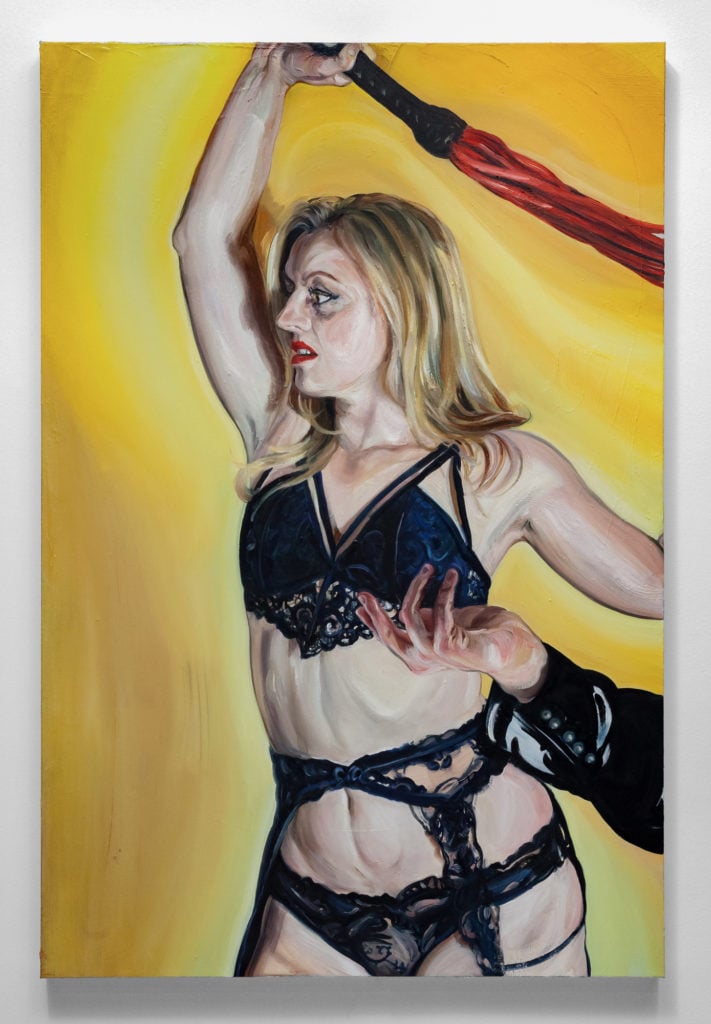
The artist talks to us about reclaiming fairy tales and the subtleties of the female gaze.

Sarah Cascone

After a traveling show of drawings inspired by fairy tales, Natalie Frank descended into the dungeon—literally—to find the subjects for her newest body of work.
Her current show, “Natalie Frank: Dancers and Dominas” at Chicago’s Rhona Hoffman Gallery, sees the artist diving deep into the underbelly of the BDSM world of New York City. Frank photographed real life dominatrices, going beyond the whips and black leather to paint intimate portraits of these professionals who dominate their clients.
As an entry point, a friend put Frank in touch with one dominatrix, and the project grew organically from there. “Dominatrices, who wanted to be involved in the project, started contacting me, which was really great,” she says. Frank worked closely with Ariana Chevalier, who operates Parthenon, the only female-run dungeon in New York City. Ariana’s daughter Hera, one of the dominatrices who works at Parthenon, was also a subject of Frank’s new work.
The artist pairs her dominatrix paintings with portraits of other professional performers: ballerinas. Her models, who include a principal with the New York City Ballet and a dancer at the American Ballet Theatre—both friends of the artist’s—provide a compelling contrast to the taboo subject matter of her erotic tableaux, which lend legitimacy to an often misunderstood subculture. As Frank explains below, being a dominatrix isn’t so much about domination as it is collaboration: The submissive partner and the dominatrix work together to explore issues of pain and desire.
The show also includes one older work, which Frank describes as a kind of abstract self-portrait. “It felt relevant to bridging together these two bodies of work,” she says. “I think maybe the dancers and dominatrices maybe represent different sides of me.”
Frank, who is best known for her drawings of the Brothers Grimm fairy tales, continues to present counter-narratives about sexuality, power, and gender through a feminist lens. Recently, artnet News spoke to the artist about sexual dominance, the similarities between her work and Degas’s portraits of dancers, and the complexities of the male and female gaze.
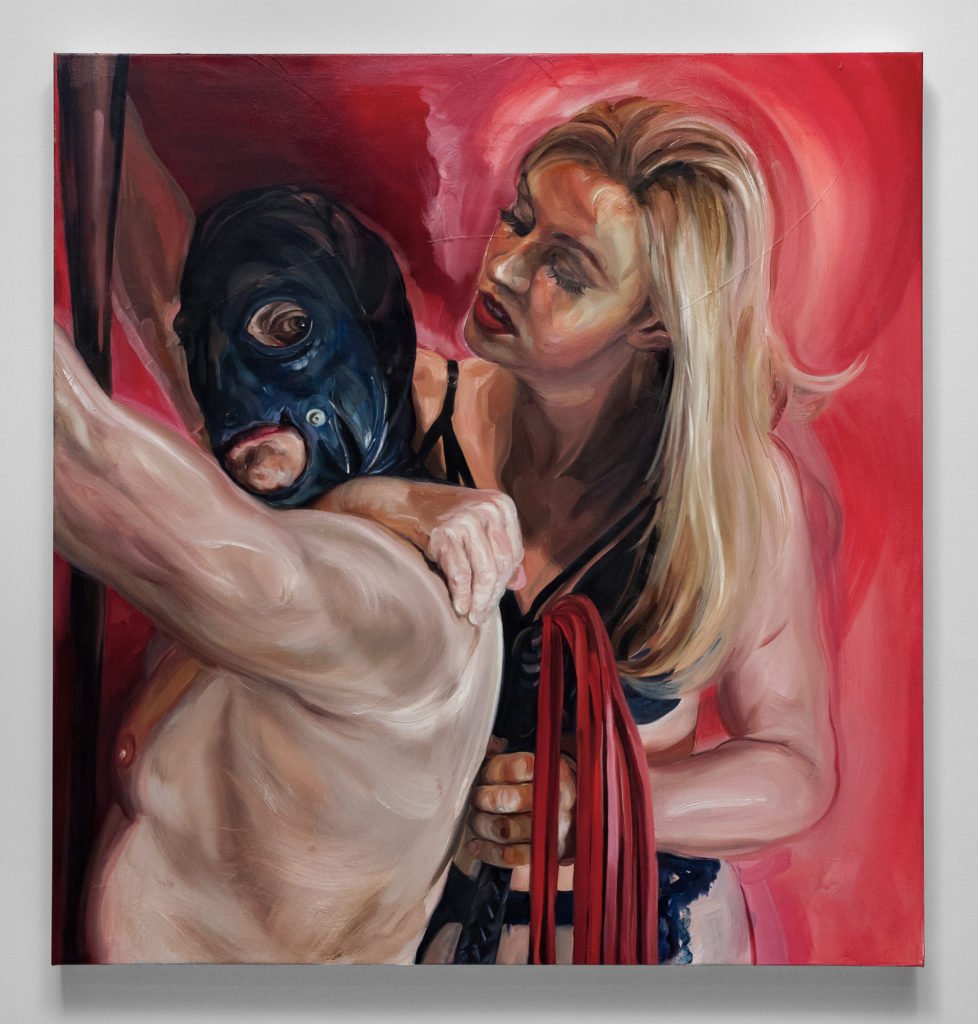
Natalie Frank, Domina II (2017). Courtesy of the artist and Rhona Hoffman Gallery. Photo credit RCH | EKH.
What inspired you to take on dominatrices as the subject for your new work?
I’ve long wanted to do it. I’ve always been interested in narratives of power surrounding women and their bodies, and those undercurrents of sexuality and violence. I first thought about painting dominatrices again when I was watching that show Billions. I was really drawn to the female dominatrix character [Wendy Rhoades played by Maggie Siff] and the attorney general who goes to see her.
The past four or five years now, I’ve been working with fairy tales, first with the Grimm fairy tales, then with The Sorcerer’s Apprentice, and now I’m getting ready to start a third book of fairy tales. They all began as women’s oral stories, told and collected by women and considered women’s art. The early literary storytellers, from the 1300s to the 17th century, were all women, and it was actually considered a kind of proto-feminist art.
Fairy tales were co-opted in the 19th century by people like the Brothers Grimm. Seeing how these men have changed the narrative surrounding women and their bodies—as well as issues of power, violence, and sexuality—I’ve been interested in how women can and do reclaim [those ideas], and dominatrices are one example of this.
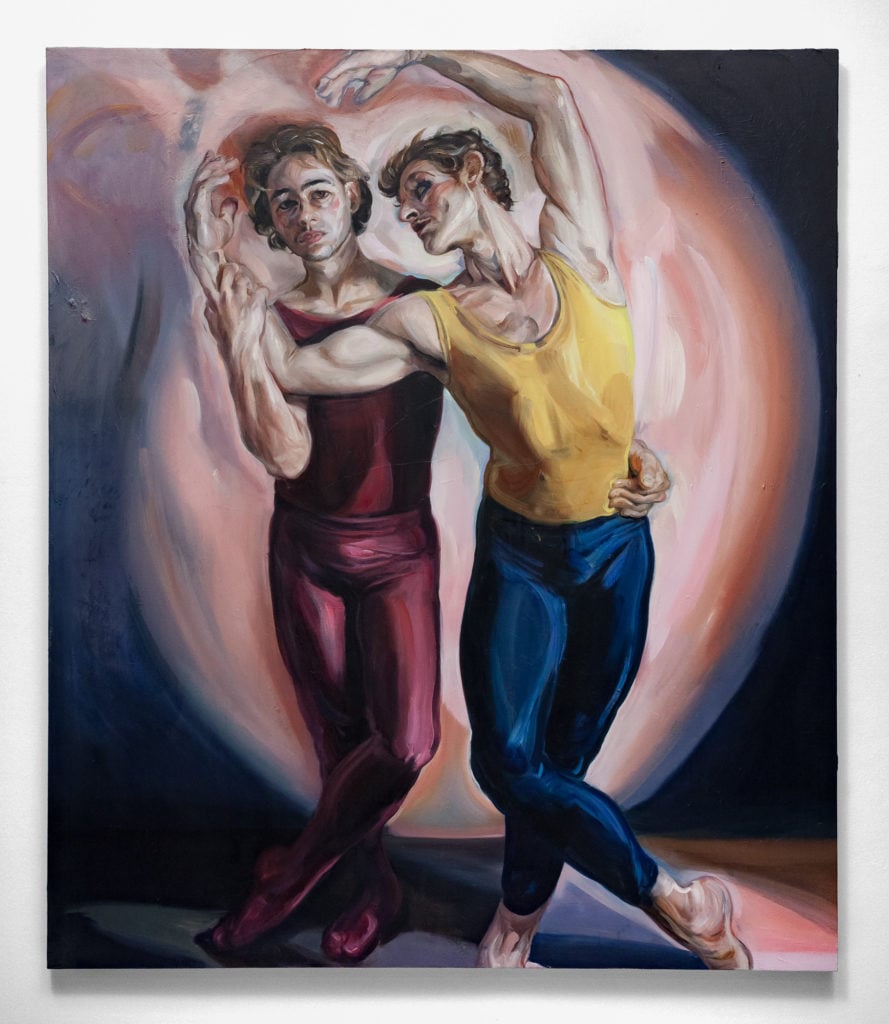
Natalie Frank, Dancers II (2017). Courtesy of the artist and Rhona Hoffman Gallery. Photo credit RCH | EKH.
What did you learn about your subjects and was there anything about their work that surprised you?
There were! Going in, I knew the cliches of the dungeons, the whippings, and the dark fantasies. But I didn’t realize the degree to which the process is about empathy and vulnerability.
We did this event at Soho House with three of the dominatrices I photographed: Lucy Sweet Kill, Renee Trevi, and Sandra LaMorgese. They talked about what would be surprising to an outsider about their practice, which is how intense and personal the sessions are. They usually only do one session a day.
They all agreed that they saw themselves almost as medical professionals who guided their subjects as they worked through early childhood trauma, fears, anxieties, pain, and desires. They create a safe space for their subjects to act out their fantasies and fears.
It was a real pleasure and privilege to be able to go into their world, work with their submissives, photograph them en scène, and really learn about what they do.
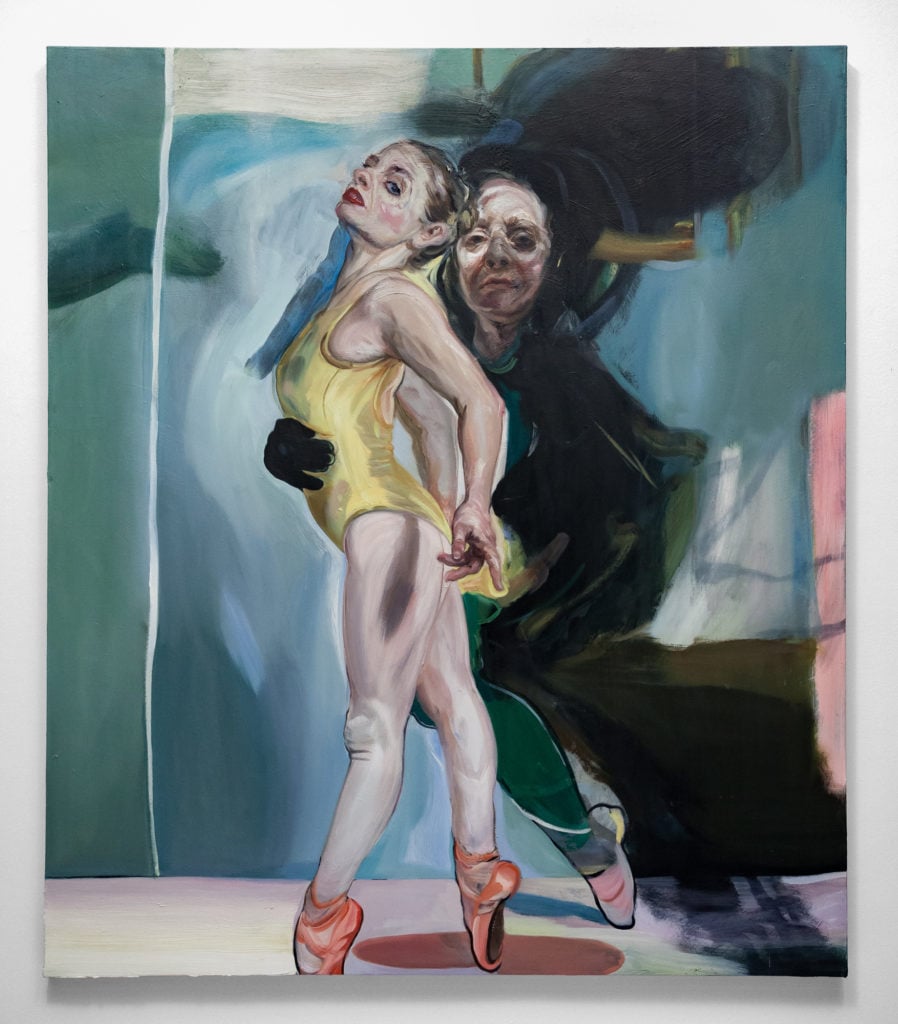
Natalie Frank, Dancer I (2017). Courtesy of the artist and Rhona Hoffman Gallery. Photo credit RCH | EKH.
Can you talk a bit about the work in the exhibition?
It’s the first body of paintings I’ve made in four years. It was really nice and startling to return to painting on canvas. I think working through the fairy tales has allowed me to move beyond the constructed narratives that go into my drawings. But the paintings are freer to just be what they are: portraits.
I’m showing portraits of ballet dancers and dominatrices interspersed with each other against light pink walls. The paintings from the two sets mirror each other in terms of color, movement, cropping, and gesture—juxtaposing both the contortions of the body and ideas of femininity.
I like the parallels and juxtapositions of the two groups of people, who use their bodies to tell stories: one considered very high art, and the other considered kind of secretive, a lower art with these connotations of degradation and debasement. I didn’t find that at all—hopefully I humanized both the dancers and the dominatrices in ways that went past our usual conceptions and cliches surrounding the women doing each practice.
It was quite a different experience photographing each group. The dancers really looked to me to find a pose for them, but with the dominatrices there was a definite assertion of control. Before going into the dungeons, I’d discuss things with the women. The minute we went inside, they became the dominatrix. They took direction, but it was a very significant shift in tone. When we were talking one-on-one, we were like girlfriends. But then we went into the room and it was very clear what the power structure was. It was pretty interesting to see.
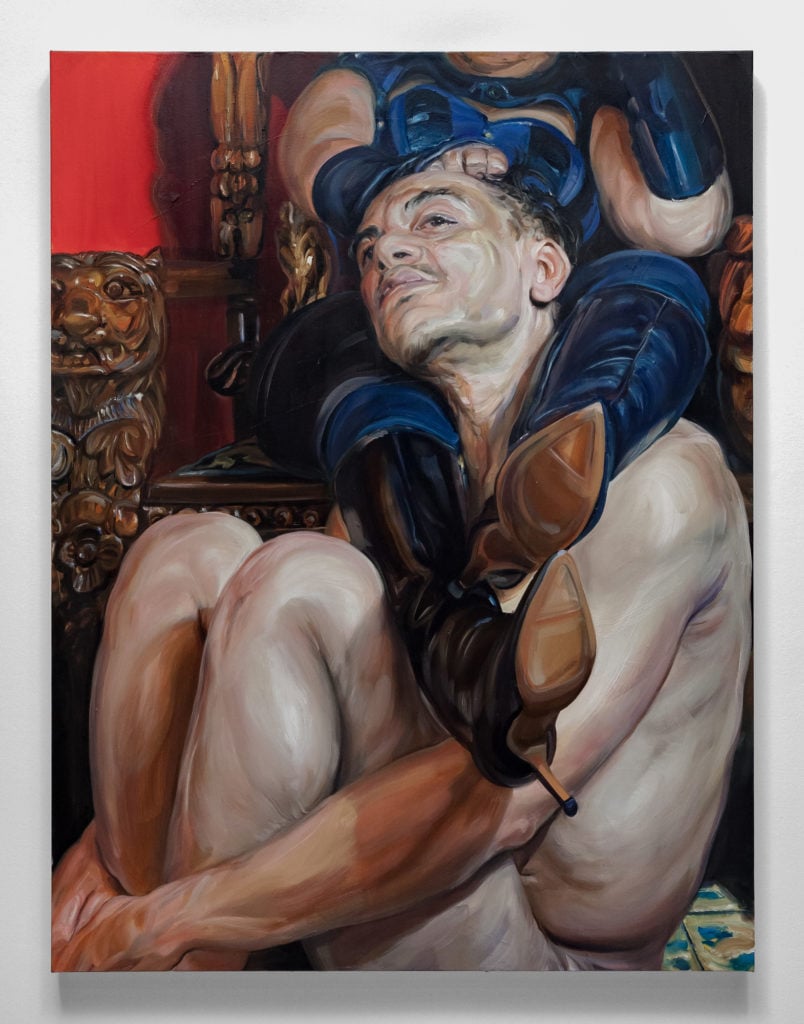
Natalie Frank, Domina III (2017). Courtesy of the artist and Rhona Hoffman Gallery. Photo credit RCH | EKH.
I see a connection here with your “Tales of the Brothers Grimm” drawing series. There, you brought to light the often whitewashed darkness of the original fairy tales. Here, you’ve once again focused on sexuality and violence, pairing the dominatrix with dancers, who are thought of as more elegant and refined. Why are those themes so prevalent in your work?
More than darkness. Drawing the Grimm fairy tales was about reclaiming these stories for women. The Grimm brothers came along and they changed them, slapped their name on them, and lied about their origins. My work was about pulling out the female figures and complicating the female characters. The next book I’m going to do is on the first French feminist fairy teller, Madame d’Aulnoy, who’s considered the mother of the fairy tale and coined the term fairy tale [conte de fée]!
When I was 12 and starting life drawing, it was about the body, the figure, and locating myself in the world. I think my consciousness as a woman grew up at the same time that I discovered art, and so those two became inextricably linked. It’s just always been about trying to locate the female body in history, in time, in space in narrative. I think growing up in the south with its complicated ideas about gender, sexuality, hierarchy, and patriarchy didn’t help matters either.
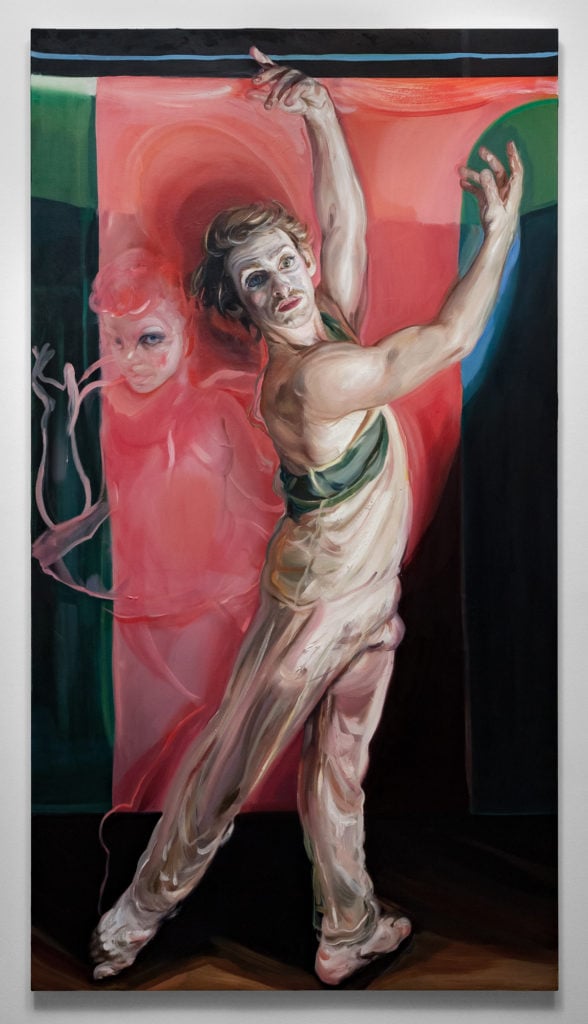
Natalie Frank, Dancer III (2017). Courtesy of the artist and Rhona Hoffman Gallery. Photo credit RCH | EKH.
Dancers are now considered a very traditional, classical subject for a work of art, but when Degas was working it was hardly a high-class profession. Did that inspire the pairing of dancers and dominatrices for you at all? Were you thinking about how our current perception of dominatrices might change and evolve?
Context is so important. You take a person and put them on the stage at Lincoln Center, what they’re doing becomes so different from what’s happening in a dungeon. Of course there are different types of training, but I was thinking about our conceptions of portraiture and performance artists, and how they’re tied to class or race or gender—how they really change through time.
Degas called his dancers his little rats! He’s one of my favorites artists. I always appreciated the way he complicated femininity in those dancers. They’re not like in the fairy tales. They’re not Disney princesses. Women and people are much more complex.
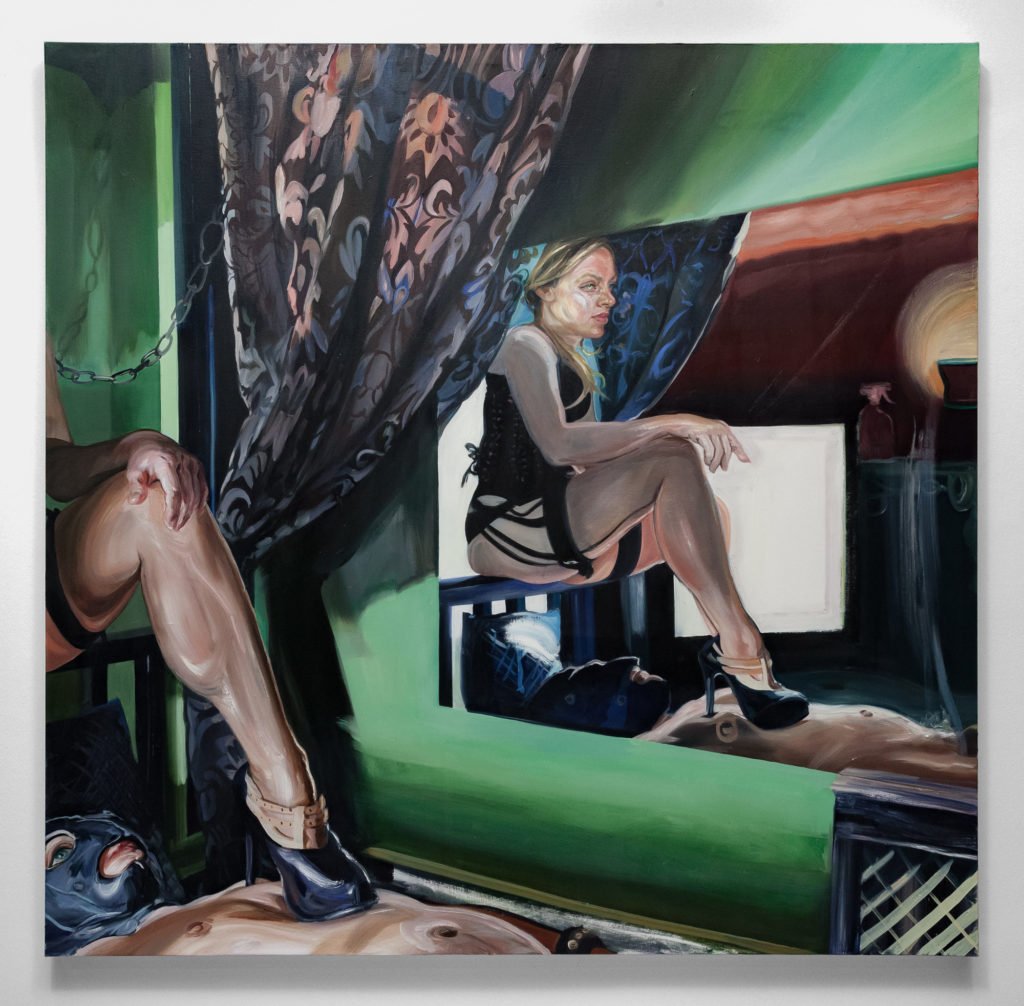
Natalie Frank, Domina I (2016–17). Courtesy of the artist and Rhona Hoffman Gallery. Photo credit RCH | EKH.
How does your work fit into the arc of art history, and how do your paintings stand apart from historical work exploring similar subject matter?
Everyone is working in a continuum, not a vacuum. That includes the paintings that have come before, but also your background or even your day or where you woke up. What was important for me in this body of work, was that there haven’t been paintings of dominatrices, and that’s surprising.
I’m always thinking about the male gaze. When we look at paintings through art history, it’s the Olympia (1863), the woman as the receptacle of the male gaze. It’s been fun to subvert that and flip that around. That’s generally what I’ve always tried to do in paintings and drawings, so this just seems built into the dominatrix’s profession.
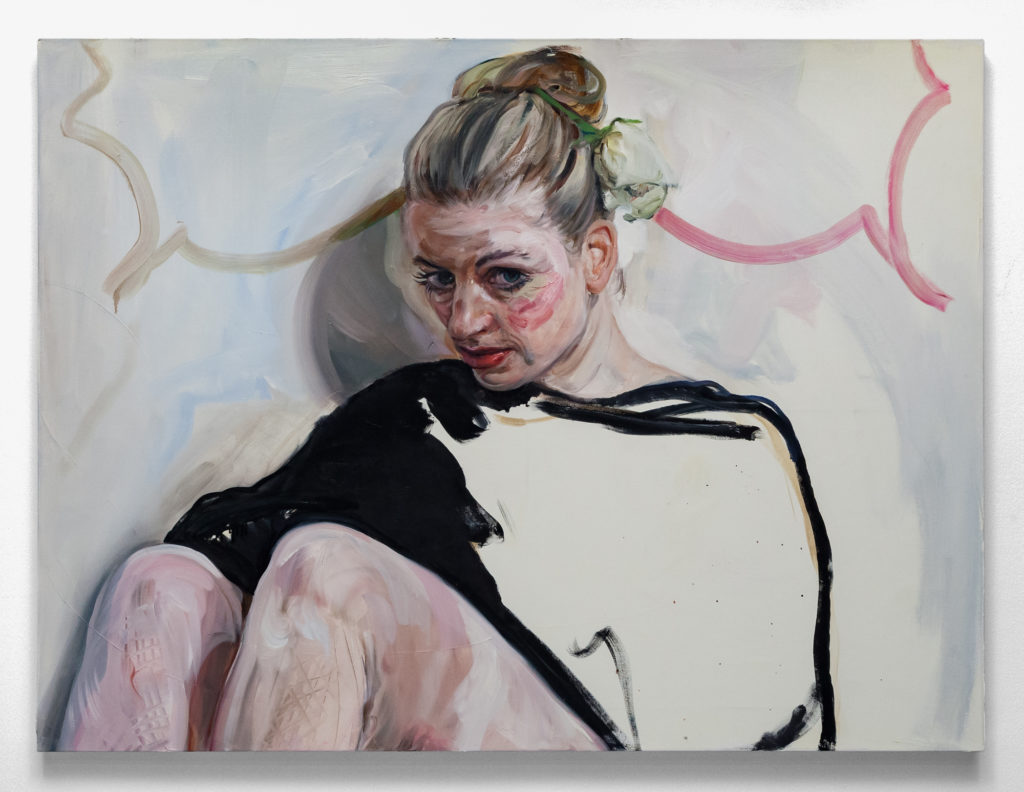
Natalie Frank, Dancer IV (2016). Courtesy of the artist and Rhona Hoffman Gallery. Photo credit RCH | EKH.
The concept of the male gaze and the rejection or reclamation of it has become such a through-line in feminist art. Do you ever feel confined by the expectation to engage with that issue? Obviously it’s still valuable to consider, but does it ever become a limiting conceit to think about work in that way?
I’m not making these paintings just thinking about the male gaze. What I enjoy doing as a female painter is setting up scenes that I enjoy looking at. Ultimately it’s about complicating the gaze, so women don’t feel like they’re always at the receiving end of it.
In terms of the bigger question, until there is parity, which we’re so far from, it’s still an issue. I think about the fact that there’s one feminist art center, the Sackler Center for Feminist Art at the Brooklyn Museum—there’s one in the entire world—that speaks for itself. I think it’s just something that we deal with every day, men and women, and it’s something that needs to be continually addressed.
This interview has been edited and condensed.
“Natalie Frank: Dancers and Dominas” is on view at Rhona Hoffman Gallery 118 North Peoria Street, Chicago, June 2–July 7, 2017.